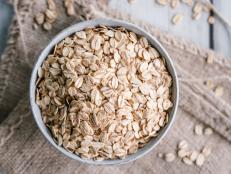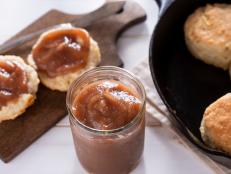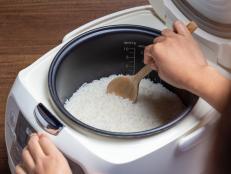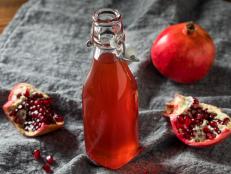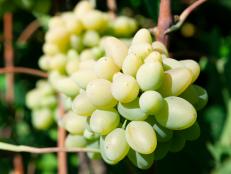The Spanish Pantry
A well-stocked pantry is the key to all good cooking, and with these supermarket and specialty items on hand, you will be able to put together Spanish meals easily.
Almonds: Almonds are used in many dishes, and eaten as tapas.
Anchovies: Keep olive-oil cured anchovies on hand for tapas and other dishes. You can buy Spanish anchovies from Spanish food sources, but you can also use imported Italian oil-packed anchovies. Another treat are mild white Spanish vinegar-cured anchovies, called boquerones.
Beans (white beans, chickpeas, lentils): Beans are essential for many Spanish stews. Chick peas are the most popular bean, but large white beans, limas, favas and lentils are all widely used.
Bread: Bread is often used to thicken Spanish dishes, such as gazpacho and romesco sauce.
Canned tuna: Some of the best canned tuna in the world is Spanish tuna packed in olive oil. You can find it from online sources and specialty stores. Italian canned tuna in olive oil can be substituted. Bumble Bee tonno in olive oil can also stand in.
Eggs: There's nothing more Spanish than a Spanish omelet (tortilla española), which can be made entirely with ingredients in your pantry — eggs, onions, potatoes, olive oil.
Garlic: An important ingredient in many Spanish dishes.
Manchego cheese: There are many Spanish cheeses to choose from, but Manchego is most famous and easiest to find. Manchego is rich, golden, semi-hard cheese with a full buttery flavor, and keeps for a long period of time.
Ñora peppers: These mild dried red chile peppers are used in Spain's signature romesco sauce. Ancho and New Mexico chiles can be substituted.
Olives: Olives are on every tapas menu in Spain. Keep black and green imported Mediterranean olives on hand; they don't have to be from Spain. The easiest Spanish olives to find are large green manzanillas, which are often stuffed.
Olive oil: Like other Mediterranean cuisines, Spanish cooking is olive oil-based, and Spain produces more olive oil than any country in the world. Use extra-virgin olive oil only. The finest Spanish oils are made from arbequina olives.
Onions: Many Spanish dishes begin with onions and garlic cooked in extra-virgin olive oil until meltingly tender and aromatic.
Paprika: Spanish paprika is dark and smoky. Called pimentón, it is essential for many long-cooking Spanish stews, as well as classic condiments such as romesco sauce.
Peppers (red and green): Both red and green sweet peppers are used in many Spanish dishes. They keep well in the refrigerator and are well worth having on hand.
Piquillo peppers: Canned roasted piquillo peppers are imported by several Spanish food companies. They are amazingly sweet. Roasted red bell peppers may be substituted, though they have a fleshier texture and aren't as intensely flavored.
Potatoes: The Spanish use somewhat starchy potatoes, which soak up flavors like a sponge. Keep russet or Yukon golds on hand for Spanish omelets and many other dishes.
Rice: Short or medium-grain: If you can't find imported Spanish rice, use Italian Arborio (the kind used for risotto).
Saffron: Saffron is an expensive ingredient, but a little goes a long way. Keep it in a tin in the freezer, and it will remain fragrant for a very long time.
Salt: Don't skimp on salt when you cook Spanish food. Spanish chefs love sea salt.
Spanish chorizo: This dense, smoky, paprika-flavored sausage is not to be confused with soft, spicy Mexican chorizo. It comes in two varieties, fully cured dry chorizo (similar in texture to pepperoni), and semi-cured fully cooked soft chorizo (similar in consistency to kielbasa).
Spanish ham: Spain produces the world's greatest cured hams. Serrano, which is easier to find than the prized Ibérico, is used in many Spanish dishes. Italian prosciutto can be substituted.
Tomatoes: Keep fresh local tomatoes on hand during the summer. For year round cooking, canned tomatoes are your best choice.
Vinegar: An important ingredient in many dishes, the Spanish use red wine, white wine, and sherry vinegar. If you want to choose just one, sherry vinegar is very versatile.


























